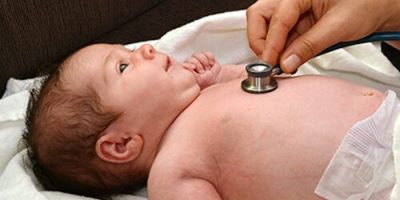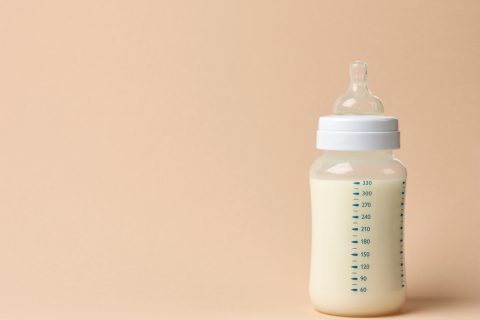Necrotizing Enterocolitis (NEC) From Baby Formula
Studies found an association between cow’s milk baby formula and an increased risk of necrotizing enterocolitis (NEC) in preterm infants. Formulas such as Abbott’s Similac and Mead Johnson’s Enfamil are at the center of lawsuits that allege the formula makers didn’t properly warn parents of the risk.
- Last update: June 30, 2025
What Is Necrotizing Enterocolitis (NEC)?
Necrotizing enterocolitis (NEC) is a serious and potentially life-threatening gastrointestinal disease that primarily affects premature or low birth weight infants, especially those under two pounds. Premature infants are more likely to develop NEC because they have weaker digestive and immune systems.
NEC differs from mild gastrointestinal (GI) issues in newborns, such as reflux or constipation, because mild intervention may resolve GI issues. NEC, on the other hand, is a potentially life-threatening inflammatory condition that can cause a baby’s intestinal tissue to die.
In severe cases, the intestinal wall can break down and cause holes in the baby’s intestines. Bacteria leak out of these holes into the bloodstream or abdomen, which may cause a severe infection.
This disease affects 1 in 1,000 premature babies, also called preemies. Researchers don’t know the exact cause of NEC, but studies have linked cow’s milk baby formula to an increased risk of NEC in premature infants.
How Is Baby Formula Linked to NEC?
Studies as far back as the 1990s have shown an association between cow’s milk baby formula, such as Similac or Enfamil, and an increased risk of NEC in premature infants.
The ultimate decision on what to feed your baby is between you and your medical provider. Each baby and situation is different. Being able to feed your baby adequate nutrition is what’s most important.
Studies That Associate NEC and Baby Formula
One of the first studies on NEC and baby formula was the 1990 study in the medical journal The Lancet. Researchers found that NEC in exclusively formula-fed babies was six to 10 times more common than in babies fed breast milk alone. In those who received both formula and breast milk, NEC was three times more common. Researchers found that pasteurized donor human milk was as protective against NEC as raw maternal milk.
A newer study published in 2024 in Advances in Neonatal Care found that preterm infants fed an exclusive human milk diet had a lower risk of NEC than babies fed cow’s milk-based formulas.
Babies fed human milk had a 1% mortality rate from NEC, whereas babies fed cow’s milk formula had a 6% rate. Babies fed human milk also gained more weight.
What Do the FDA, NIH and CDC Say?
In 2024, the FDA, NIH and CDC released a statement saying there is no conclusive evidence that preterm infant formula causes NEC. However, because human milk is protective against NEC, evidence indicates that not drinking human milk is tied to a greater NEC risk.
The agencies said that premature babies who don’t have access to donor milk or parental milk may be in critical need of specialty formulas.
Which Formulas Are Involved?
Formulas involved in the NEC and baby formula controversy mainly include Similac and Enfamil cow’s milk formulas designed for preemies, such as Similac NeoSure or Enfamil NeuroPro.
- Similac Liquid Protein Fortifier
- Similac NeoSure
- Similac Human Milk Fortifiers
- Similac Special Care 20
- Similac Special Care 24
- Similac Special Care 24 High Protein
- Similac Special Care 30
- Enfamil NeuroPro EnfaCare Infant Formula
- Enfamil Premature Infant Formula 24 Cal High Protein
- Enfamil Premature Infant Formula 30 Cal with Iron
- Enfamil Premature Infant Formula 24 Cal with Iron
- Enfamil Premature Infant Formula 20 Cal with Iron
- Enfamil 24 Cal Infant Formula
- Enfamil Human Milk Fortifier
Commercial formulas attempt to mimic human milk by using proteins, fats and vitamins. They’re meant to be a convenient and flexible way to feed infants.
However, formula doesn’t have the antibodies found in breast milk that protect babies against illness and infections such as NEC. Donor breast milk has some antibodies, although pasteurization reduces the amount, and direct breastfeeding produces a complex milk blend that changes as a baby’s needs change. Formula manufacturers haven’t been able to duplicate this.
What Are the Symptoms of NEC?
Symptoms of NEC can gradually appear over a few days or suddenly appear in a seemingly healthy baby. NEC signs usually happen anywhere from two to six weeks after birth.
- Abdominal swelling and pain
- Heart rate, blood pressure, temperature and breathing changes
- Diarrhea and bloody stool
- Vomit that is green or yellow
- Refusing to eat
- Lack of weight gain
- Lethargy
NEC can develop quickly and progress rapidly. Babies may be fine one moment and very ill the next. NEC often requires urgent medical attention. Some babies may need surgery to remove dead tissue or may just require antibiotics. Other preemies may need to stop feedings and use IV fluids for their nutrients instead.
Babies who survive NEC may continue to have digestive problems into adulthood.
Drugwatch spoke to NEC survivor Addison and her mom, Cassidy (aliases used to protect privacy). Addison was born prematurely, and the right side of her intestinal tissue died because of NEC. At the time, Cassidy didn’t know cow’s milk formula could have contributed to Addison’s NEC.
Now, as a teenager, Addison has eosinophilic esophagitis and GERD.
“[EoE is] caused by all the acid in my stomach, and I have GERD, so it’s like it goes all up in my throat and it makes it swell. And so it’ll close up, and I can’t eat and drink,” Addison told Drugwatch.
NEC Baby Formula Lawsuits
NEC baby formula lawsuits allege that formula makers Abott and Mead Johnson failed to adequately warn parents about the increased risk of NEC from cow’s milk baby formulas.
- Design Defects: Abbott and Mead did not design a formula that was safer for preemies and didn’t reformulate their products to reduce the risk of NEC.
- Failure to Warn: Abbott and Mead had a duty to warn the public of the increased risk of NEC, but they didn’t. The failure to warn makes their formulas unreasonably dangerous.
- Negligence: If Abbott and Mead had satisfied their duties to protect the public, preemies would not have been exposed to their dangerous cow’s milk-based products.
Most NEC lawsuits are consolidated in multidistrict litigation in the Northern District of Illinois. A multidistrict litigation (MDL) consolidates large groups of cases with similar facts and defendants into one group, so litigation goes more smoothly.
Parents who joined the MDL filed either a Similac lawsuit or an Enfamil lawsuit for NEC injuries.
There were 744 NEC cases pending as of July 2025. There is a separate MDL for Abott’s recalled baby formulas, but those cases don’t have anything to do with NEC.
NEC Lawsuit Updates
So far, there haven’t been any NEC lawsuit settlements, but there were two large jury verdicts in 2024. A Missouri jury awarded $495 million against Abbott, and an Illinois jury awarded $60 million against Mead Johnson to parents whose children developed NEC.
Typically, plaintiffs and defendants don’t begin settlement talks until they’ve seen a few jury verdicts first. But settlement talks can start at any time during the litigation.
In May 2025, the judge overseeing the NEC MDL in Illinois dismissed the case that was supposed to be the first bellwether test trial. According to Judge Rebecca Pallmeyer, there wasn’t enough evidence to show Abbott failed to warn doctors or families about NEC risks. Although the first trial was dismissed, more cases from this MDL will likely be held in the future.
Frequently Asked Questions
Calling this number connects you with a Drugwatch.com representative. We will direct you to one of our trusted legal partners for a free case review.
Drugwatch.com's trusted legal partners support the organization's mission to keep people safe from dangerous drugs and medical devices. For more information, visit our partners page.


